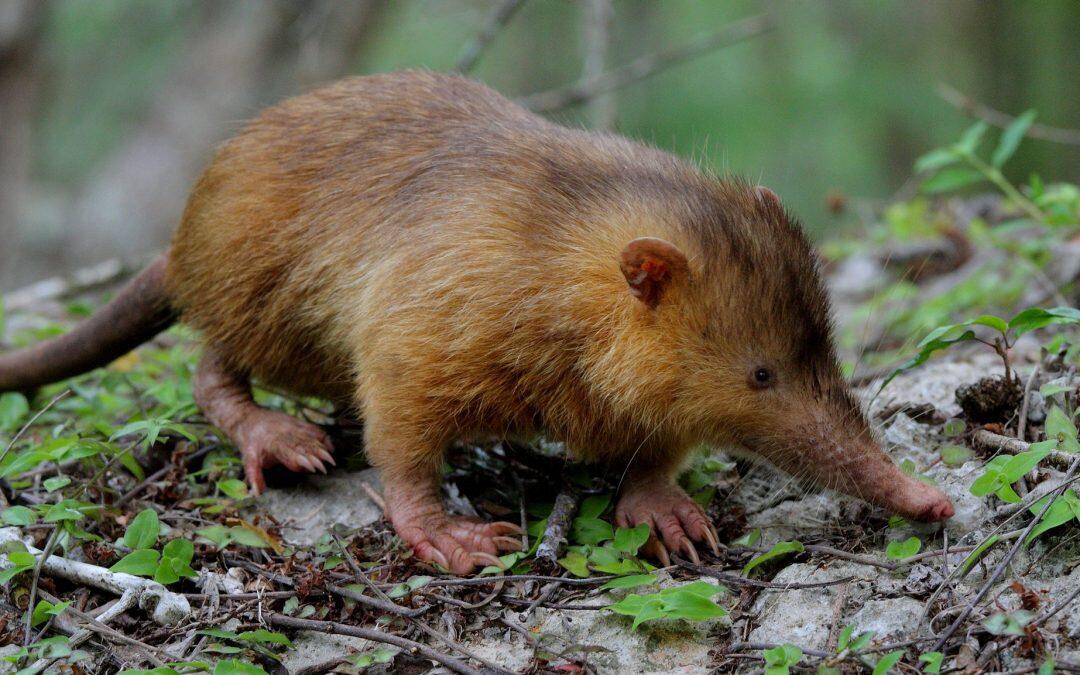Solenodon is a mammal that has survived the ice age, and the asteroid collision that killed the dinosaurs, but now, it is endangered due to stray dogs. The Guardian quoted Adam Brandt, lead author of a recent study that took the first look at the solenodon’s mitochondrial DNA, as saying that “The solenodon lineage diverged from other placental mammals circa 78 million years ago. That means [it] has existed since the Cretaceous period.”
However, there are only two surviving species from this type of “weird” animal today. One found in Cuba and the other, more well known, on Hispaniola. These two species alone are so distinct from any other mammal that they represent an entire biological family: Solenodontidae.
Solenodons might be called “weird”, for the following reasons:
- They can squeeze venomous saliva out of their incisors
- They have evolved a ball and socket joint in their snout to give it extra-special maneuverability
- They use echolocation to locate prey
- They are nocturnal mammals, that live in burrows and come out at night to eat grubs and insects
Currently the Hispaniola solenodon is considered endangered by the IUCN Red List – though two of its subspecies may be close to extinction. The Cuban solenodon is in an even more precarious position. Also considered endangered, the species has been feared extinct more than once.
Scientists are trying to find out basic data on the Cuban solenodon, and they are discovering surprises regarding the better-known Hispaniolan species. Surveying the species’ various populations, Samuel Turvey and his team recently discovered that the Hispaniolan species is actually three distinct subspecies.
https://www.youtube.com/watch?v=ZiUA2wjtQH8
“[These] evolved as a result of local isolation in the island’s geologically complex landscapes,” Turvey said, who noted the subspecies can be told apart both through DNA and physical attributes.
Subspecies:
- One subspecies is found in a single forest in Haiti and may be perilously close to extinction
- Another subspecies is found throughout the bulk of the northern Dominican Republic, but is little known
- The third is located across the southern Dominican mountain range – Sierra de Bahoruco – that includes several parks and is the best protected of the subspecies
According to Global Forest Watch, the Dominican Republic lost more than 200,000 hectares of forest between 2001 and 2014, the discovery complicates conservation of the species as the southern subspecies show very little genetic diversity, while the northern subspecies survives in a highly fragmented landscape.
Unfortunately, climate change and deforestation are affecting a huge number of living this, and this cute animal is one of them. Not only deforestation is affecting the Solenodons, but also stray dogs, feral cats, and invasive mongoose are a big threat to it.
Facebook: greenarea.info











